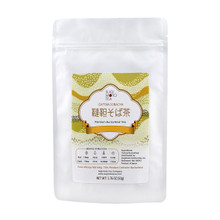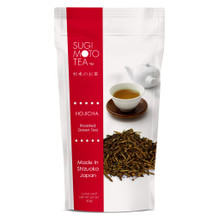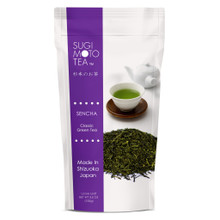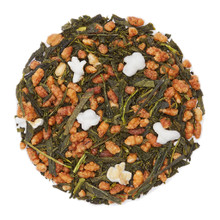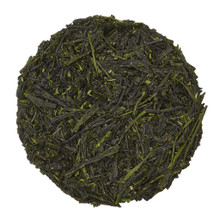Homare Sencha: Sugimoto’s Pride and Joy
We have several different types of sencha here at Sugimoto Tea Company, from blends designed for everyday drinking, to single cultivars. Sencha remains the most popular and ubiquitous tea in Japan. Homare Sencha is the highest quality sencha currently offered by Sugimoto Tea Company, our pride and joy. This is evident even in the name, which Hiroyuki Sugimoto gave to the tea: “homare” meaning “pride.”
It’s made from the best of the best Yakibuta tea leaves from the spring harvest, carefully selected and blended together to ensure Homare Sencha is the highest quality we can possibly produce. That’s something we say a lot, though, so we thought it might be time to explain how we assure that our tea leaves are of the highest quality. Here at Sugimoto, we have three main ways to assure the quality of our teas.
First, we carefully select the tea leaves. At our headquarters in Japan, already steamed tea known as aracha from the first harvest comes in from Kanaya, Kawane, and Kakegawa, Shizuoka. These three areas are well-known for the production of green tea and the areas most of our aracha comes from. Our sencha is mostly made from fukamushi, or deep steamed tea that we purchase directly from farmers. This unrefined tea is inspected by Kyohei’s father and brother, Hiroyuki and Masaaki, and our production manager Mitsuhiko Masuda. With their skill and knowledge, they sort out the varying qualities of tea. Only the best of the best gets set aside to make Homare Sencha.
Second, we examine the appearance of the tea leaves. Our tea experts remove any stems or misshapen leaves so the remaining tea is uniform in color and shape. This step helps our tea steep evenly and ensures that it looks and tastes delicious. Leaves of a different color often mean that unpleasant flavors will be introduced into the tea.
Third, we use a roasting process known as hi-ire to ensure we make the best tasting tea possible. Our signature process uses much higher temperatures than the standard tea roasting process other companies use. These higher temperatures enhance and perfect the flavor and aroma of our teas. Not all leaves can withstand the process, however, so we’re constantly adjusting the temperature and time of roasting to ensure the tea doesn’t burn. This takes a lot of time and discussion and every batch of tea is unique.
Once the tea is roasted and checked again to make sure it’s still even in color and appearance, it’s important to test the aroma of the tea. Even though tea leaves come to us from the same farmers and fields year after year, the slight variations in weather and soil can affect the taste from harvest to harvest. Our team includes several people who are trained to evaluate tea aromas, and we take this part of the tea making process very seriously, especially when it comes to our Sugimoto Reserve line and our Homare Sencha.
Tea leaves are placed in a small tasting bowl with hot water so the tea master can assess it. They then use a sieve to hold the leaves close to their noses to carefully smell the tea. If the aroma is good, chances are that the color and taste will be too. If there are any unpleasant smells, something is wrong with the tea. Because we use such high-quality leaves for Homare Sencha, however, the good aroma is practically a given.
Every year we go to the same farmers who have consistently shown that they produce quality tea which we blend to produce our Homare Sencha. However, since the quality of tea leaves can vary from harvest to harvest due to factors outside of the farmer’s control, if we aren’t happy with a particular farmer’s tea one year we might bring in another farmer. Sugimoto has about 5 farmers we trust to grow the tea plants that will eventually become Homare Sencha.
How to Enjoy Homare Sencha
Because we understand that some people might want to know the exact best way to enjoy Homare Sencha, we asked the people who would know it best. Masaaki Sugimoto is Kyohei’s brother and the person who oversees tea production at our headquarters in Japan, and Mitsuhiko Masuda is our production manager who makes sure the entire process of making tea runs smoothly.
Q: What’s the best way to brew Homare Sencha?
Masuda: I don’t use boiling water, I use slightly cooler water at around 80°C (176°F).
Masaaki: I use slightly hotter water, about 85°C (185°F).
They also recommended that you drink Homare Sencha out of a mug or teacup because the scent of this tea is very important. Definitely don’t drink it out of a paper cup with a lid.
Q: What foods pair well with Homare Sencha?
Masaaki: When I have sweets, I want to drink Homare Sencha.
Masuda: I don’t think there’s any food it doesn’t go well with. I think that’s what makes it so special.
Masaaki: Well, I don’t recommend satsumas.















